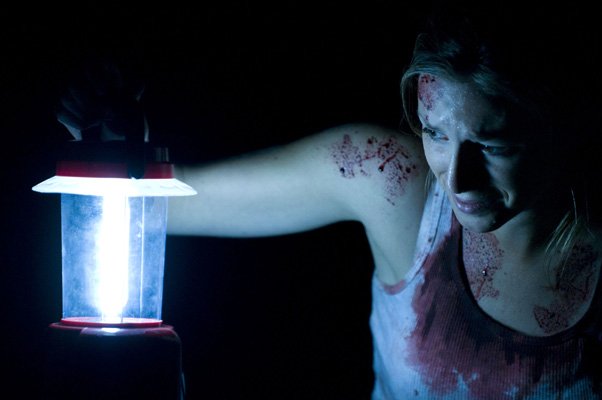In Silent House, Sarah (Elizabeth Olsen) travels to the countryside with her father and uncle to prepare an old summer home for sale. The windows have been boarded up to keep the neighborhood vandals away, and the only light comes from candles and battery-operated lanterns. It doesn’t take long for the adults to go missing, leaving Sarah trapped in the house and relentlessly stalked by a menacing intruder.
Silent House is built around an interesting premise: the entire 88-minute film takes place in real time, and is cleverly edited to give the impression that the action takes place in a single take. Indeed, the film’s marketing is also based around this idea, and even though there are plenty of moments during the film where a cut could have (and probably did) happen, it still makes for a different kind of experience.
[pullquote_right]Olsen gives a captivating performance as she pulls the audience along on an exhausting emotional journey.[/pullquote_right]The film wouldn’t have worked nearly as well without a strong lead, and Olsen gives a captivating performance, fully immersing herself in the character as she pulls the audience along on an exhausting emotional journey. Combined with the claustrophobic atmosphere and voyeuristic cinematography, Silent House builds tension to remarkable levels before falling apart in the final moments, where subtlety goes out the window in favor of entirely too much exposition, ending with a disappointing “twist” that feels overly contrived.
The ending of Silent House is certain to be divisive and spark plenty of discussion, but I don’t foresee any of those discussions praising the decision to take the film in such a bizarre direction. These questionable choices by the filmmakers turn a great film into one that’s just pretty good, which is frustrating when you take into account the amount of potential this had.

